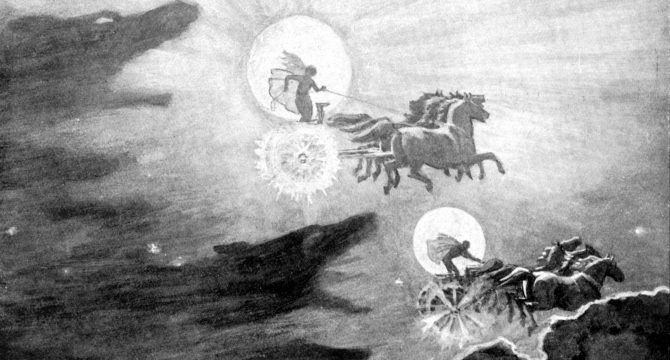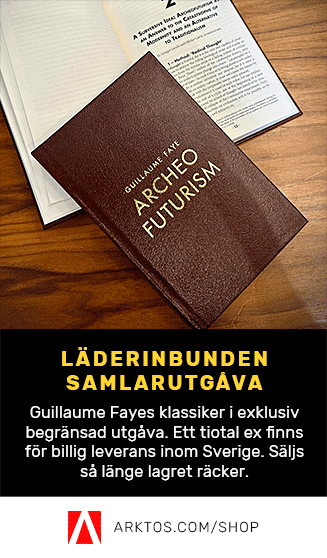Den fysiska antropologin erbjuder en av flera pusselbitar i återskapandet av historien, det är ofta en fascinerande vetenskap. Ett exempel på det är Carleton Coons massiva The Races of Europe från 1939. Coon är bitvis poetisk, i stycken som ”other exceptions were the coastal Norwegians, to whom for the first time civilization was now brought in significant quantity. In the shelter of their chilly fjords the new Nordics blended with the hunters and fishermen left over from the age of ice, who, through this new genetic vehicle, were assured permanent survival.” Fascinerande är hans resonemang kring våra germanska förfäder, resonemang som lyfter fram hur unika de skandinaviska urfolken egentligen är. Genom vår koppling till jägarsamlarna från paleolitisk tid är vi jämförbara, och avlägset befryndade, med Nordafrikas berber.
Coon beskrev norra och nordvästra Europa som en periferi där dessa storvuxna och särpräglade urfolk levde kvar även efter att jordbrukare från öster svept som demografiska flodvågor över stora delar av Europa. Han skrev att ”during the entire Neolithic, almost all of Norway, as well as central and northern Sweden, remained in a food-gathering stage of culture, although Neolithic axes and other objects were traded to them from the south. There can be little doubt that to a large extent the northern hunters were direct descendants of Mesolithic, and hence of Late Palaeolithic, man. Many traits of their so-called Arctic culture have survived until recent times.”
Vågor av nykomlingar nådde deras hem, både från öst, väst och syd. Coon talade här bland annat om Megalithic, Corded och Hallstatt, alltså megalitbyggare, snörkeramisk kultur och hallstattkultur. Han beskrev germanerna som frukten av detta möte, deras centrum placerade han i Danmark, södra och centrala Sverige, Norge, norra Tyskland, Gotland och Bornholm. Lingvistiken pekade enligt Coon i riktning mot att germanerna indo-europiserats relativt sent, ”the eccentric linguistic position of the Germanic peoples in the total Indo-European family has its racial connotation”. Han menade även att ”it is very likely that the ancestral Germanic speech was introduced into Scandinavia by the invaders who brought the Hallstatt culture to that backward region.”
Kombinationen av hallstattnordiska influenser och äldre befolkningar resulterade i en germansk typ, representerad bland annat av visigoterna. Coon skrev om den att ”this physical type is accompanied by tall stature, of about 170 cm., and by a considerable heaviness and robusticity of the long bones. The bodily build was clearly heavier and thicker set than that of the previously studied Nordics. That it was characteristically blond is attested by the pigmentation of living examples as well as by numerous early descriptions”. Med folkvandringarna spreds den långt bortom sina ursprungliga domäner. I bland annat Norge möter vi en annan typ, där de storvuxna inslagen från övre paleolit är tydligare. Coon skrev om den att ”Thor was apparently the god of the older people, of the carl class, and he represents in his person and attributes a blend between the robust Mesolithic hunters and fishermen, and the Megalithic and Corded people. His association with the last named is clearly shown by his devotion to the doubleheaded hammer, which was probably nothing more nor less than the boat-axe.”
Av spekulativt intresse blir naturligtvis den eventuella kopplingen mellan mesolitiska urinvånare och vissa inslag i den forna seden. Det är frestande att delvis knyta jättarna till de för-germanska jägarsamlarna, inte minst i egenskap av bärare av uråldrig kunskap. Günther beskrev Oden som en västnorsk ”Sondergott”, det är fullt möjligt att vissa aspekter av allfadern kan härledas tillbaka till traditioner från mesolitisk tid. Även om det samtidigt framstår som ett projekt lämpat mer för konstnärer än forskare, jämförelser med de fragment av för-islamisk religion vi finner i Nordafrika kan här vara av intresse. Sammantaget är Coons resonemang kring germanernas ursprung intressanta och bitvis fantasieggande.













